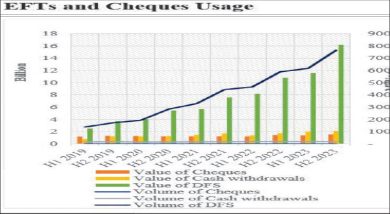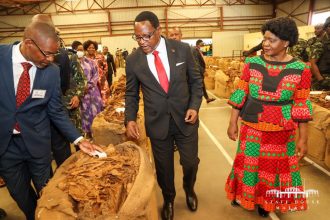NPC sees low GDP growth threatening MIP-1
The National Planning Commission (NPC) says the country’s plan to attain a middle income status in the next seven years faces setbacks if the country continues to record minimal growth.
NPC director general Thomas Chataghalala Munthali said this in an interview in view of the central bank figures indicating gross domestic product (GDP) growth is projected to decelerate to 1.9 percent from the earlier projected 2.7 percent.
He said: “Any deceleration on growth due to exogenous shocks and resultant macroeconomic instabilities definitely has impacts on the timely attainment of First 10-year Implementation Plan (MIP-1 milestones.
“Government, therefore, needs to be taking a very active role in the market in strong alliance with the private sector in such areas as mining, mega farming, agro-processing and enhanced manufacturing.”
Malawi’s under the MIP-1, a collection of minimum catalytic interventions that have been determined to contribute to two key milestones of graduating the country to a middle-income status and meeting most of the United Nations Sustainable Development Goals (SDGs) by 2030.

According to the NPC, to attain this, the country needs at least six percent GDP growth annually to move to a lower-middle income country by 2030.
Ironically, the country’s economic growth has consistently hovered below three percent,
Meanwhile, the RBM has indicated that the domestic economy would slow as the country faces some headwinds, mainly foreign exchange challenges and agricultural shocks.
In its third Monetary Policy Committee Statement issued recently, the Central Bank said the limited supply of foreign exchange has continued to affect the timely importation of intermediate goods for production.
“This, coupled with the impact of adverse weather conditions experienced during the 2022/23 agricultural season, as well as the lingering effects of the Russia-Ukraine war, has weakened the initial prospects of a stronger growth this year,” the RBM said.
Munthali has since emphasised the need to prioritise and bolster efforts around building healthy foreign exchange reserves to ensure availability in the country.
He said: “Whatever efforts by the country around having balance of payment support in the short term, need to be supported by long term solutions which are around developing our productive sectors.”
Meanwhile, the World Bank has slashed Malawi’s 2023 GDP growth rate projection to 1.4 percent, a development the Bretton Woods institution says is due to the fact that economic recovery will be gradual with significant risks remaining.
The Economist Intelligence Unit (EIU), on the other hand, has also warned that growth will be undermined by weather shocks, huge funding gaps and a severe monetary tightening shock as such the GDP growth is projected to marginally grow by 0.7 percent.
Following Tropical Cyclone Freddy, which hit the country’s Southern Region in March, there has been loss of life and property and disruption of business.
Apart from disrupting water and electricity services, the cyclone also disrupted service delivery in government offices.
The disruption came at a time agriculture production was expected to pick up with favourable weather conditions expected in the 2022/23 growing season. This is what was reflected in the crop and animal production subsectors which were expected to grow by 3.5 percent compared to one percent last growing season.
On the other hand, the country is grappling with acute forex shortages which have affected almost all sectors of the economy and importation of critical items such as fuel.
RBM data currently indicates that the country’s total foreign exchange reserves stood at $714.1 million or2.9 months of imports in June from $572.4 million or 2.3 months of import in May, and compared to $805.4 million or 3.2 months of imports reported in June 2022.
Malawi, however, requires $3 billion per year to meet imports requirements but only produces $1 billion according to RBM data.
According to the RBM foreign exchange the country generates is only enough to cover 33 percent or one third of the import needs.
Each month, Malawi spends an average of $250 million for imports.






One Comment